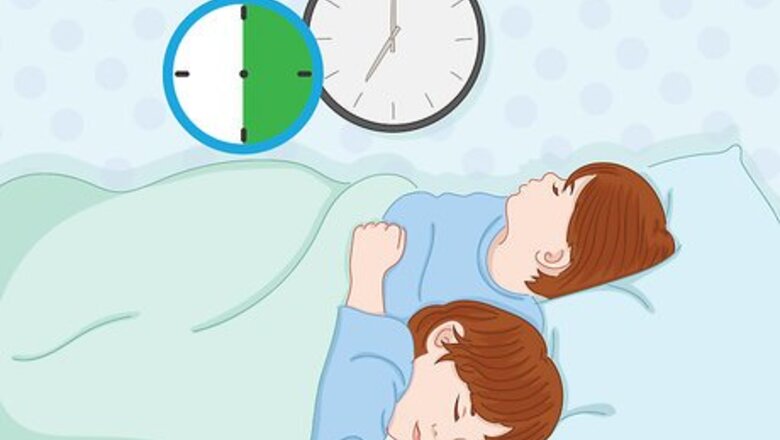
views
Establishing a Bedtime Routine
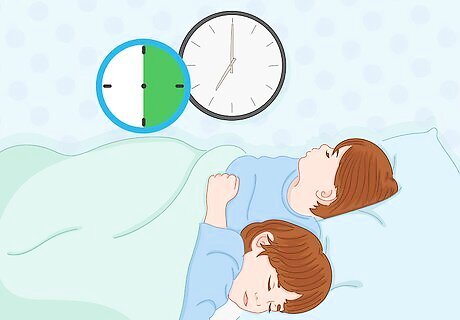
Start the bedtime routine at the same time each night. This is super important for establishing consistency and a predictable nightly routine. If you want your toddlers in bed by 7:30 pm and know it’ll take 30 minutes, start the routine at 7 each evening. Try to leave the bedroom at the same time each night as well so that your toddlers know how much time they have with you. Avoid letting the toddlers stray to another activity once the routine has started by calling them back to their task when they start to go off.
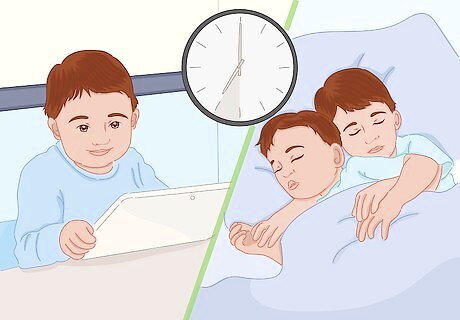
Finish all screen-time an hour before bed. Screens are stimulating and children have a hard time falling asleep after they’ve been using or watching them. Try to get all TV, computer, tablet, or other screen use out of the way at least an hour before bedtime so their minds have a chance to relax. Don’t let the toddlers have screens, such as tablets or gaming devices, in their bedroom during the night.

Keep bathtime short and calm. If part of your routine is a nightly bath, try to keep the bath short—roughly 5-10 minutes—so that the toddlers don’t have too much time to play and become energized. Keep the bath warm to help them relax, and encourage the toddlers to use quiet voices while in the tub. Avoid putting lots of different toys in the tub, as this will just make them want to play longer. If you do want to use toys in the tub, stick to 1 or 2 that don't create a lot of mess, such as a water-proof book or toy duck.

Read 1-2 stories to help the toddlers settle down. Storytime is a great way to work on phonics and reading while also creating a calming, soothing environment. Let the toddlers pick out which books they’d like to read, or you can choose books that you think they’ll like. You can let each toddler pick out 1 story for you to read for a total of 2 books each night. If you’d rather only read 1 book a night, let the toddlers switch off picking out a book each night. Read the book in a soft, calming voice.
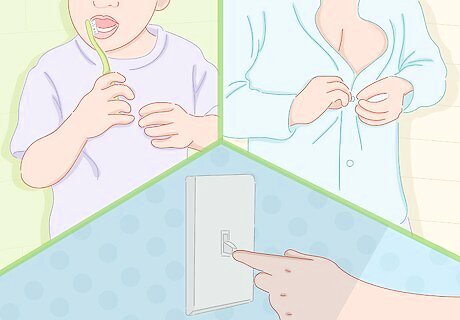
Stick to the routine every night for the best sleeping conditions. Try to create a bedtime routine that’s easy to follow, such as brushing their teeth, changing into pjs, reading a story, and then lights out. After a couple of days or weeks, your children will adapt to the routine and know exactly what to expect. Try to complete the routine in order to avoid confusion or distractions. It's a good idea to create a visual chart that displays the routine in order. This will allow your older toddlers to anticipate the next step in their bedtime routine. Try to engage both kids during the entire routine so that one of them isn't running away while you tuck the other one in.

Have consequences if the toddlers don’t settle down. If your children are having a really hard time staying in bed, set up some consequences for getting out of bed. Tell them the consequences before you leave the room, and make them very clear. You can also create rewards for staying in bed all night. Consequences could be taking away a toy or telling them that they will not be allowed to watch their favorite TV show the next day if they do not go to bed. Rewards could be getting to do something fun the next day, like going to the park or getting a treat. You can also use a sticker chart to encourage your tots to stay in bed. This is a great visual reminder, and the stickers can even act as a reward! If one toddler goes to bed easily while the other one doesn't, reward the one who went to bed and give a consequence to the toddler that didn't.

Set limits and only go to your toddlers if absolutely necessary. It’s likely that your toddlers will cry out for you or have a hard time settling down the first few nights you start the new routine. It’s important not to go to them every time they call and to set limits as to when you will or won’t enter the room. If they say they need water or to go to the bathroom, only allow them to do this once each night after they have already been tucked in. Be kind but firm, and try not to always intervene.
Creating a Safe and Peaceful Atmosphere
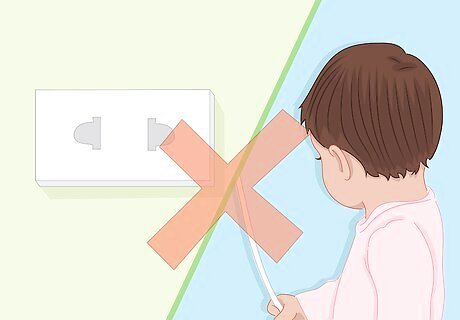
Remove climbing aids and other hazards. It’s common for twin toddlers to climb out of their cribs, jump on other furniture, or use their time alone together to become rambunctious. Make sure there’s nothing in their bedroom that could be dangerous, such as open electrical sockets, wires that they can pull, or furniture that they can jump from.
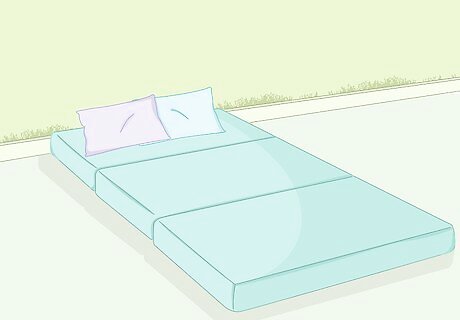
Place mattresses directly onto the floor for safety, if necessary. If your toddlers are climbing out of the crib or jumping from their beds, it might be a good idea to just place their mattress and boxspring directly on the floor. This way, you won’t have safety concerns each night. Opt for a toddler-sized bed as opposed to a twin bed as a good transitional option.

Dim the lights to create a softer atmosphere. While you’re reading books, putting on pjs, or tucking the toddlers in, try to dim the lights to emphasize that it’s time to sleep. Use a nightlight in the room if the toddlers don’t like darkness. Closing the blinds will help toddlers sleep if they go to bed while the sun is still up, and it will also encourage them to sleep in later. Use a blue-based light, especially for nightlights. Blue-based lights are better for falling asleep, compared to red-based lights.
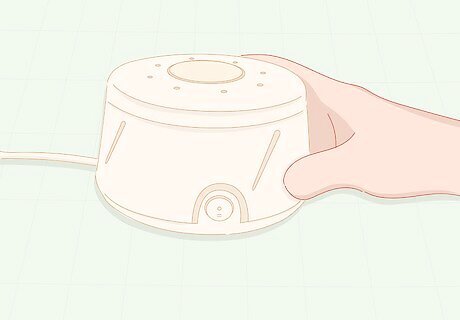
Use white noise to help the toddlers sleep peacefully. Whether the toddlers are anxious, light sleepers, or distracted by one another, using a white noise machine or similar option will help them fall asleep faster. If one toddler has trouble sleeping through the other toddler’s noises, place the white noise system close to their bed so they sleep more easily. White noise machines, fans, or soft music helps to create a soothing atmosphere.

Place a baby gate in front of the bedroom door. While you can childproof the doorknobs so the toddlers can’t open the door, it’s safer to leave the door cracked open and install a gate. This way, you can see into the room and will be able to hear them call out for you. Make sure the baby gate is tall enough that the toddlers won’t climb over it.
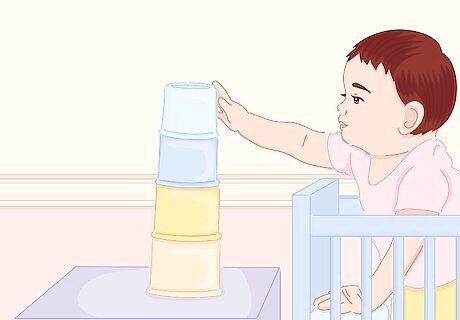
Move distracting toys to a spot where the toddlers can’t reach them. A main reason why toddlers have such a hard time falling asleep is that they start playing with their toys once the parents leave the room. Try to remove all of the toys from the floor and anywhere else in their reach. You can keep a few stuffed animals with them, if desired.

Decorate the room in a calming color, such as light blue. You can also choose a warm grey, soothing green, or cozy pink, depending on your preference. However, bright white and dark aggressive colors like red and purple aren't calming. Try incorporating your calming colors in the paint color, rugs, curtains, and decor. When painting bedroom walls, it's best to choose a flat, matte finish over a glossy paint finish.
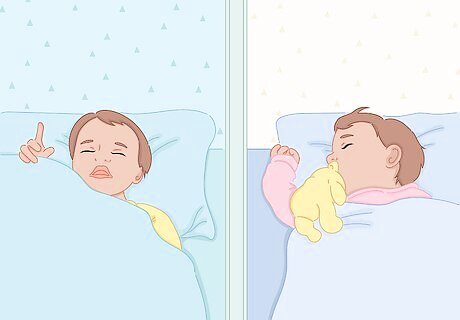
Consider putting the toddlers in two separate rooms, if necessary. If your twins won't stop distracting one another or have completely different sleep behaviors, it might be best to separate them so they can both sleep peacefully. If you have a spare bedroom, try setting up one toddler's bedtime space in one room and the other toddler's bed in another. This works well as a last resort when other methods haven't been working. If you're putting your toddlers in two different rooms, it's important to establish rules such as they shouldn't go into the other twin's room and wake them up.




















Comments
0 comment